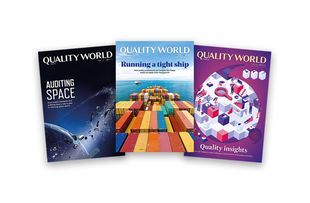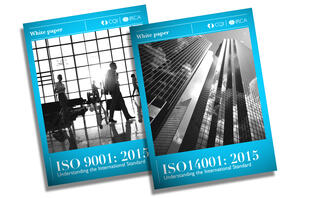
ISO 45001: all change
Progress indicator

Colin MacNee analyses the latest developments on ISO/DIS 45001 and finds some significant changes have been introduced.
The Draft International Standard, ISO/DIS 45001 occupational health and safety management systems - Requirements with guidance for use, has been published for ballot and comment.
There are significant changes from the second committee draft (CD 2).
Annex SL High Level Structure (HLS) remains intact from the CD 2 edition; however sub-clause 6.1.2.1 General (requiring worker participation in the hazard identification and OH&S risk assessment processes) and the sub-clause 6.1.4 Other risks and opportunities to the OH&S management system (requiring a process to assess these risks and identify these opportunities) have been dropped completely. The former is addressed in the expanded 5.4 Participation and consultation, and the latter subsumed in 6.1.2.1 Hazard identification.
Terms and definitions
‘Risk’ has reverted to the Annex SL definition – effect of uncertainty. ‘Workplace’ remains unchanged from CD2.
However, ‘worker’ now includes top management and this has clarified the definition – everyone is a worker.
Ill-health has returned as a term but now includes injury in the single term ‘injury and ill health’.
Similarly, the two separate terms ‘legal requirement’ and ‘legal and other requirement’ have been merged to form a single term ‘legal requirements and other requirements’.
Both these terms have seemingly two parts that can be thought of separately – they do not.
There is a new note for 'incident' clarifying that it can occur where there is no nonconformity.
There are two new terms; ‘participation’ and ‘consultation’.
Finally, the term ‘representative’ has been dropped.
Information and communication
Sub-clause 7.4 has deviated significantly from Annex SL (and ISO 9001 and ISO 14001) by adding ‘information’ to the title and ‘inform’ to the requirements.
Information is the material and inform the activity; the distinction between ‘inform’ and ‘communicate’ has not been made. Unfortunately the guidance in A.7.4 does not help; it has not been changed from CD 2. This could cause considerable confusion.
Participation and consultation
Various references to workers participation and consultation have been collected in an expanded sub-clause 5.4. Additional focus has been added, for example: the organisation must ensure the participation of workers, as appropriate, in the implementation of its continual improvement objectives [10.2.1].
Documented information
There have been only a few changes from CD 2; mainly the clarification of maintain and retain.
Other changed requirements
From CD 2 there are many changes; some new, some dropped and some with minor modification.
There are some new prescriptive requirements such as: the identification of potential emergency situations [8.2] and the process to prevent or minimize OH&S risks from potential emergencies must address first aid [8.2a]; but some have been dropped such as administrative controls no longer need to include safety signs, markings, warning devices and safe system of work [8.1.2d].
Annex A has been significantly altered from CD 2; however a detailed analysis is beyond the scope of this article.
The Bibliography has been expanded to include, inter alia, two International Labour Organization (ILO) documents.
Finally, an alphabetical index of terms has been added.
Organisations, OH&S professionals and auditors should be aware that at Draft International Standard (DIS) stage, technical changes may still occur.
Therefore, it is recommended that, while preparation can be carried out, significant changes should not be implemented until the Final Draft International Standard (FDIS) is issued and the technical content is finalised.
Colin MacNee is chair of the CQI Standards Panel
CQI’s Richard Green explains the latest delay with the standard and what it means.
Member only

This article is free to access for a limited time only. Only CQI and IRCA members receive access to all content.
Get the latest ISO reports and resources

Our many reports and resources will help you achieve a smooth transition to ISO 9001:2015 and ISO 14001:2015.